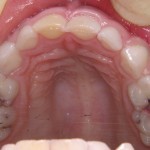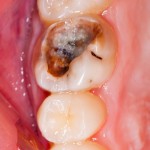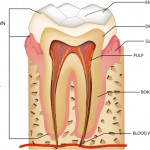
4 different vital pulp treatments for deep caries management of mature permanent molars were tested in this stud .The findings suggest that these techniques could be used but other approaches are available.
[read the full story...]
4 different vital pulp treatments for deep caries management of mature permanent molars were tested in this stud .The findings suggest that these techniques could be used but other approaches are available.
[read the full story...]
This Cochrane review of pulp treatments for primary teeth included 87 trials. Pulp treatments were generally successful with many trials having no clinical or radiological failure in either arm.
Mineral trioxide aggregate (MTA) may be the best medicament to apply after pulpotomy. For pulpectomy there was no conclusive evidence that one medicament or technique is superior to another.

This small but well conducted RCT compares the effectiveness of MTA and calcium hydroxide for direct pulp capping material in adult molars with carious pulpal exposure finding better performance for MTA at 3 years.
[read the full story...]
This well designed trial compares the impact on pulp vitality of step wise verses traditional caries removal. after 5 years. THe findings suggest significantly improved outcomes with the step wise approach.
[read the full story...]
This review of pulp capping in primary and permanent teeth included 11 studies involving a total of 1196 teeth in 922 patients . Most materials did not show superiority compared with calcium hydroxide.
[read the full story...]
This review of coronal pulpotomy in permanent teeth demonstrated good survival at 2 years 92% (95%CI; 84 -100). However as the majority of studies were observational they should be viewed cautiously until further high quality RCTs are available.
[read the full story...]
This review compared direct pulp capping in permanent teeth with MTA and calcium hydroxide including 13 studies, 10 of which were RCTs. The odds of success were higher with MTA, OR = 2.26; (95% CI, 1.33–3.85).
[read the full story...]
This small study found good short term success rates for a new MTA derived pulp capping material in permanent teeth. Larger well-conducted longer-term studies are necessary to establish its clinical utility.
[read the full story...]
This new Cochrane review update finds no evidence to clearly identify one superior pulpotomy medicament and technique for primary molars.
[read the full story...]
Exposure of the dental pulp is an occasional hazard associated with dental treatment. Direct pulp capping is a procedure in which a medicament is placed directly over the exposed dental pulp, with the specific aim of maintaining pulp vitality and health. Calcium hydroxide (CaOH) has for many years been considered the material of choice for [read the full story…]